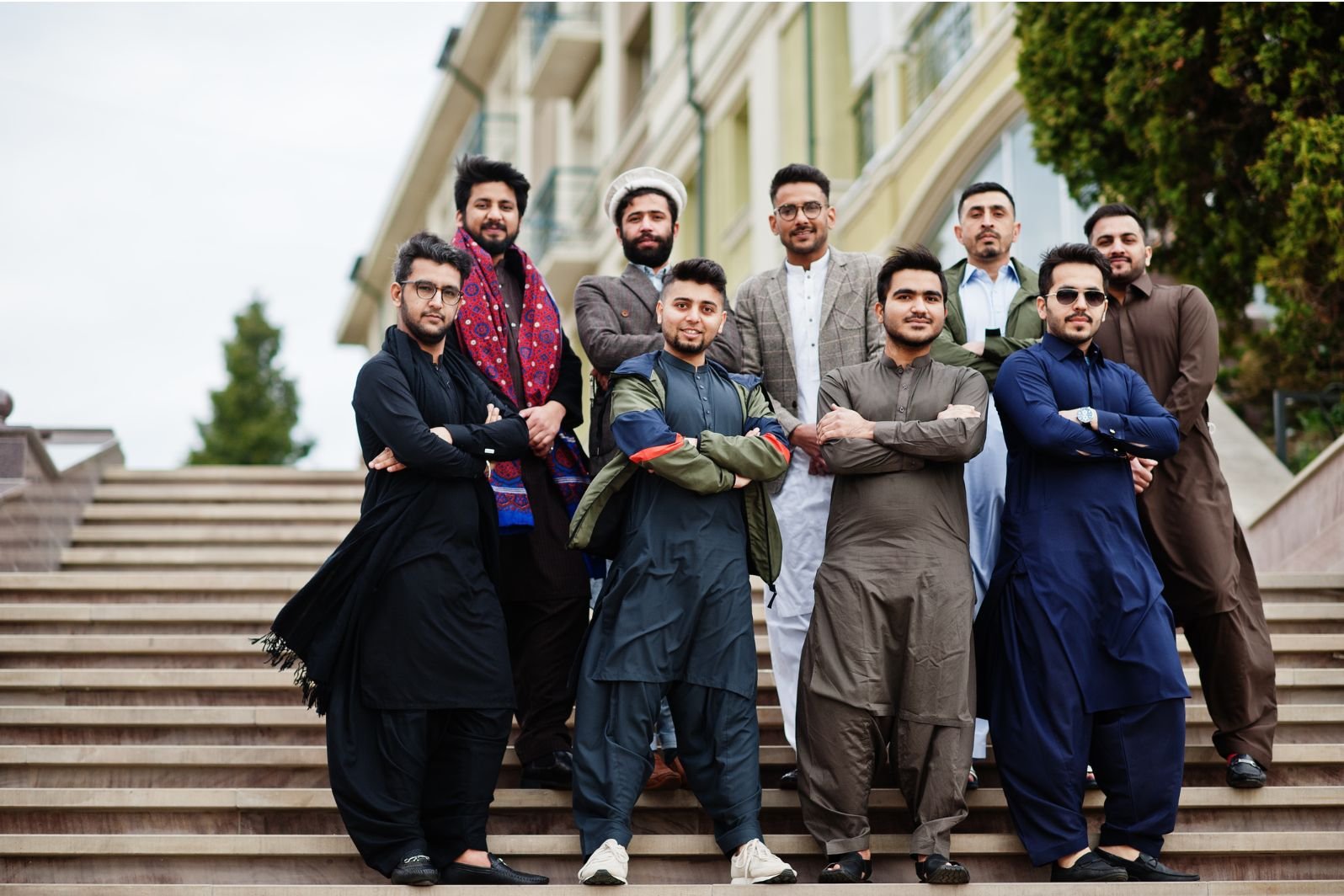Pakistan has a centuries-long history shaped by several different cultural influences. Among all the aspects of Pakistan, it is most glaringly noticeable in the traditional dress of Pakistan. The Pakistani traditional dresses for both men and women are known to be modest yet fashionable, featuring elaborate embroidery and bright color fabrics.
Among all the dresses known to be worn in Pakistan, the shalwar kameez is considered the national dress of Pakistan. While people commonly think of shalwar kameez as a women’s attire, it is also worn by men in Pakistan. However, the design and silhouette of the kameez and shalwar are slightly different for men.
Other than the shalwar kameez, there are many more traditional dresses of Pakistan, many of which have specific regionally influenced versions unknown to many. So, let’s explore the different traditional dresses worn in Pakistan.
Traditional Dress of Men
The traditional dress of Pakistani men is mainly the shalwar kameez. However, men also wear other traditional dresses. Here are some of them.
1. Shalwar Kameez
When we talk about traditional dress for men in Pakistan, it is right to start with the shalwar kameez. It is also considered the national dress of Pakistan. Therefore, men take great pride in upholding their cultural identity by wearing shalwar kameez.
The shalwar kameez is a long tunic with a loose-fit design. While superficially, the design may resemble an Indian kurta, the traditional Pakistani kameez has a classic collar. However, you may still find some kameez with a banded collar as other men’s kameez. One of the most popular styles of the shalwar kameez is the Pathani suit, which features a longer-than-usual kameez.
The shalwar, a loose-fitted pant traditionally featuring pleated designs, is worn with the kameez. The shalwar may have a slightly tapered or straight-leg design that ends at the ankles. There are several types of shalwar that are worn traditionally with the kameez, like the Punjabi-style shalwar, which has a slim-fit design, or the Afghan-style shalwar, which is known to have a looser silhouette emphasized by pleats.
The shalwar and kameez, being a staple wear of Pakistan, are traditionally made of cotton or wool to suit the diverse weather of Pakistan. In summer, men may wear the shalwar kameez on its own. Meanwhile, in winter, some opt to layer it with a traditional-style jacket or coat on top.

2. Pakistani Waistcoat
Another common staple wear in Pakistan is the Pakistani waistcoat, which is often worn with a kurta or kameez. In the local language, it is called kotee. While some believe that the design of the kotee is influenced by the British-style waistcoat, the origin of its design is unclear. Regardless, it is a much favored and loved apparel in Pakistan.
The waistcoat has a shorter length than the kameez, is meant to be worn underneath, and has no sleeves. The waistcoat gives the casual shalwar kameez a more classic look. While the more common regular-wear waistcoats are made with cotton, festive waistcoats for special occasions are made from silk and other suitable luxurious materials.
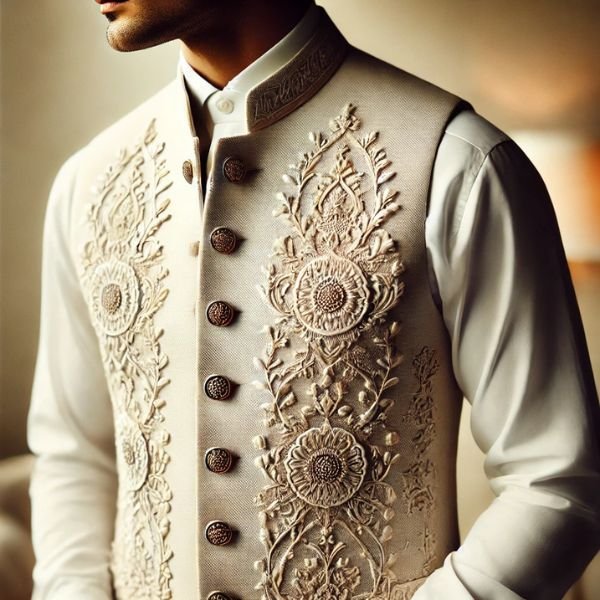
3. Achkan
The origin of the achkan can be traced back to the time of the Nawabs of Lucknow, when it was created specifically for nobility. At first glance, it is common to get confused between a sherwani, which is another traditional dress of Pakistan, and achkans. Achkan has a slightly shorter length than sherwanis and is more commonly worn during festive occasions. Because of the garment’s historical association with nobility, many people, including people of higher status, like to wear it as a symbol of prestige.
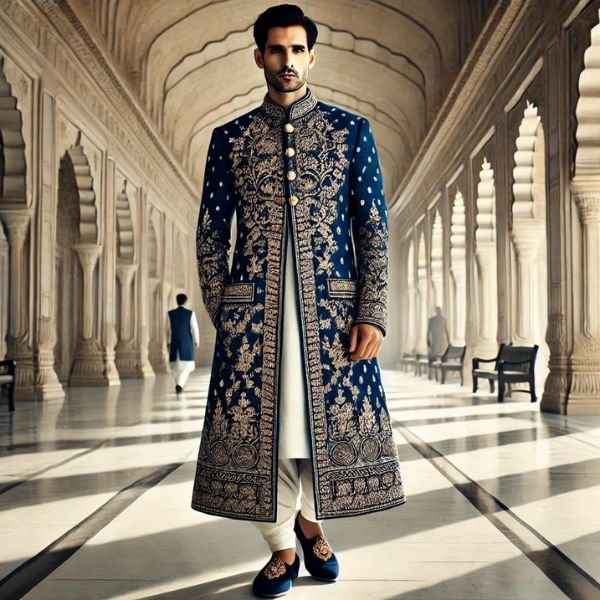
4. Churidar
The loose-fitted pants, called shalwar, are the most common traditional bottom wear for Pakistanis, but they are also no strangers to wearing fitted pajamas with kurta and kameez, commonly called churidar. Unlike shalwars, which have a wide waist that is typically tightened with a drawstring, churidars have a narrow cut right down to the ankles. The fitted silhouette gives a sleeker look, which goes well with a kameez or kurta.
Churidars in Pakistan are generally made of cotton, silk, or satin, which is suitable for the local weather there. However, more luxurious options are also available for traditional functions and events like weddings.

5. Sherwani
Sherwani is generally considered a traditional wedding attire in Pakistan. As the sherwani is more often worn at weddings, they are made with luxurious materials like silk, brocade, velvet, and so on. Along with the material, they have a double lining, which gives them a stiffer structure that can flatter any body type.
The garment is often worn as an overcoat with a kurta underneath. The sherwani has a longer length, often extending till the middle of the calf, and has a fitted waist but flared at the bottom. The combination of fitted and flared design gives it a regal look. Therefore, it is a crowd favorite for weddings.
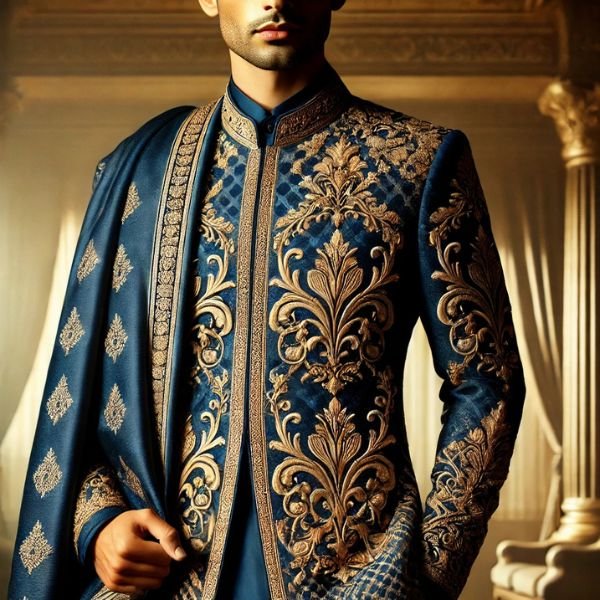
6. Balochi Suit
Balochi suits are a traditional outfit worn by people native to Balochistan. The outfit consists of a loose shalwar and kameez, a long frock-like robe called ajama, and a chadar. The attire is mostly seen in the Balochistan region because it is specifically designed to combat the harsh desert weather prevalent there.
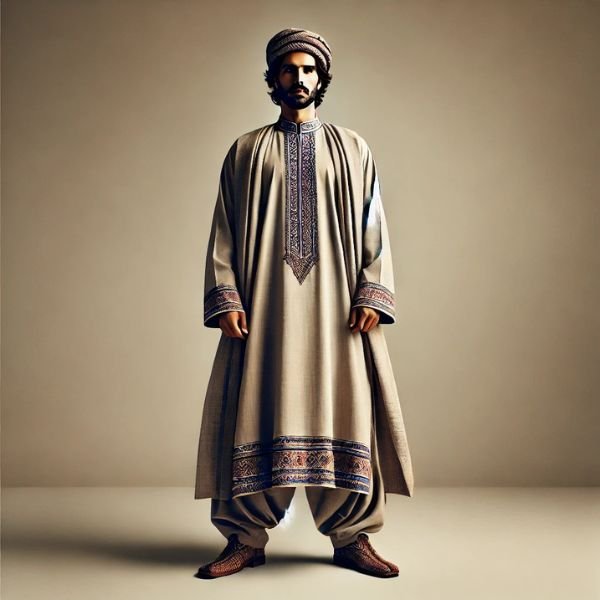
7. Sindhi Suit
The Sindhi suit is a regional traditional dress originating in the Sindh region of Pakistan. The Sindhi suit is a version of the shalwar kameez. The primary difference of this version of the attire is that the shalwar has a wide ankle cuff rather than the usual tapered design. Also, the shalwar has fewer pleats. Another difference is the shorter length of the kameez. Other than this, there are some variations of the Sindhi suit, where the shalwar is replaced with a lungi, which is called Godd in the local language.
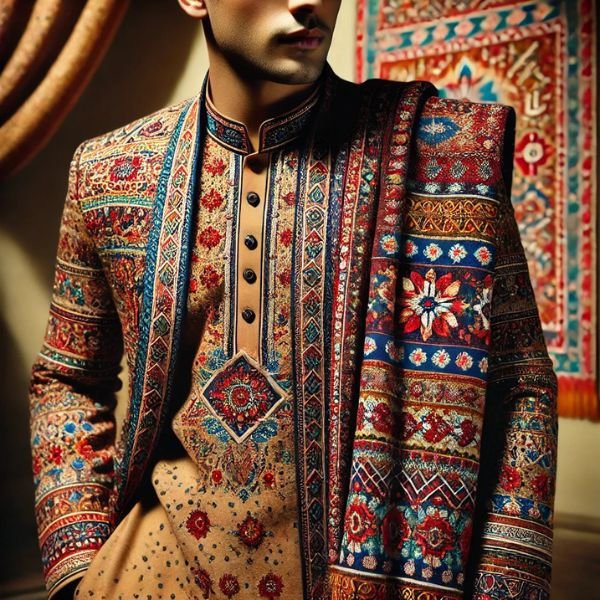
8. Pashtun Dress
The Pashtun dress consists of khet(a traditional tunic), partug(a baggy trouser with pleats), traditional Peshawari shalwar, a tunic shirt called patketunban, and traditional Peshwari cap or a headgear called pakol. The garment is a traditional tribal dress of Pakistan and is not as commonly worn by others.

Traditional Dress of Women
While the traditional dress of Pakistani women is known for emphasizing modesty, they are highly fashionable and vibrant. Here are some of the traditional dresses common in Pakistan.
1. Shalwar Kameez
The shalwar kameez is the most worn traditional dress of Pakistani women. The shalwar kameez is one of the most diverse outfits in terms of color, material, design, and embroidery work. The regular-wear shalwar kameez tends to have simple prints with a straight design kameez and shalwar. The shalwar kameez is always traditionally worn with a complimentary dupatta or a shawl.
The more festive shalwar kameez features elaborate embroidery, mirror work, or laces. They are made with silk, satin, cotton, brocade, velvet, and many other different types of materials. Due to the diversity of the garment’s design, women wear it to religious functions, special events like weddings, birthdays, etc, and even to school, as the usual school uniform in Pakistan is shalwar kameez.
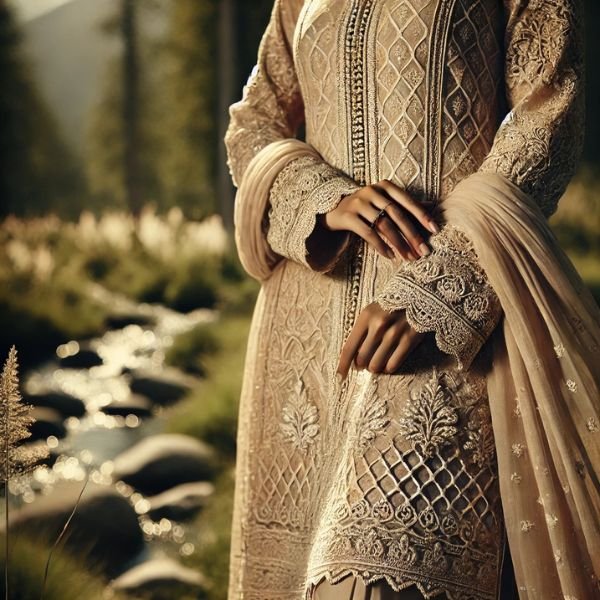
2. Lehenga Choli
Lehenga choli is the most traditional wedding dress in Pakistan. The outfit consists of a fitted, waist-lengthblouse called a choli and a floor-length,voluminous skirt called a lehenga. Lehenga cholis usually feature heavily beaded and embroidered designs as they are typically worn at weddings. The look is usually complemented by a matching or contrasting dupatta worn around the shoulder.
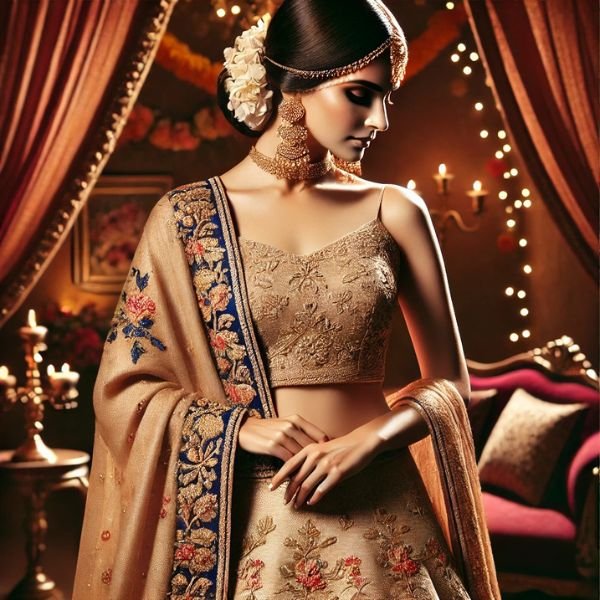
3. Sharara Suits
The sharara is said to have originated in Yemen and was later adopted by the Mughal royals. Despite not originating in Pakistan, the sharara is still considered a traditional Pakistani wedding attire. The suit consists of a waist-length or longer embellished or embroidered shalwar and wide-legged trousers, which have a silhouette similar to a skirt. The outfit is completed with a dupatta.
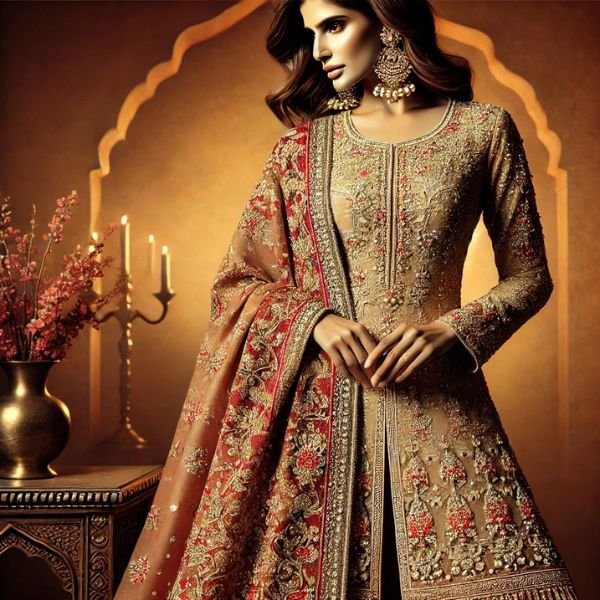
4. Gharara
Although it is said that the gharara originated in the Awadh region of India, the attire is loved by both Indians and Pakistanis. Traditionally worn on special occasions, the gharara is quite similar to the sharara. It has a long shalwar top and wide-legged trousers. However, there is a slight difference between the two attires as the sharara trousers have a fitted design down to the knee, and then it flares out like a skirt.
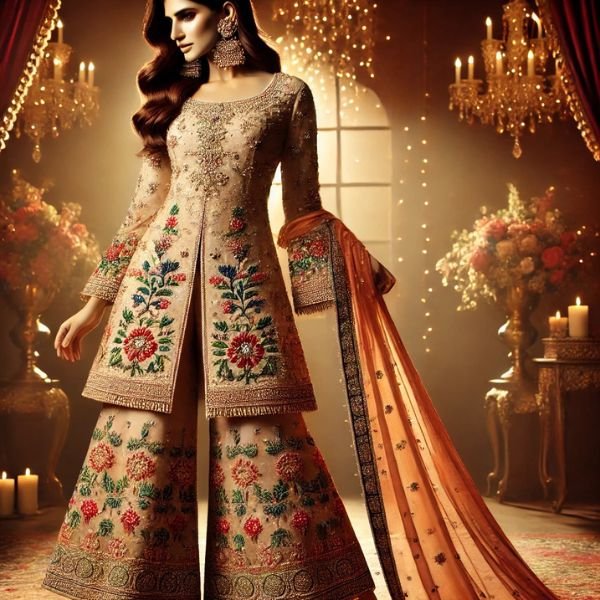
5. Farshi Pajama
With a design inspired by gowns worn by British women, the Farshi pajama was a floor-length trouser with a skirt-like design. The pajamas were made with 9 to 15 yards of luxurious fabric to create a voluminous silhouette. They were also historically embroidered with precious gold and silver threads to make fitting attire for nobility. While the dress is rarely worn now, some brides may still be seen wearing it sometimes.
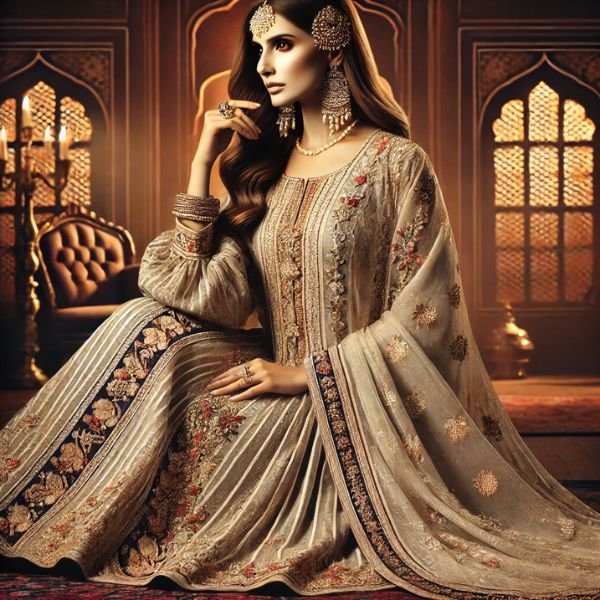
Traditional Dress of Children
Traditional Pakistani attire for children mirrors the cultural richness and diversity seen in adult clothing, blending elegance with comfort. Young boys often wear miniature versions of the shalwar kameez, sometimes paired with a waistcoat for a more formal look. For festive occasions, they may don a sherwani or an achkan, giving them a regal appearance similar to that of their elders. The Balochi suit, Sindhi suit, and Pashtun dress are also worn by children in their respective regions, helping them maintain a connection with their heritage. During celebrations like Eid or weddings, young boys may opt for churidars or embroidered kurtas paired with traditional footwear such as Peshawari chappals or khussas.
Similarly, young girls are adorned in vibrant and beautifully crafted traditional dresses, including shalwar kameez, lehenga cholis, and ghararas. These outfits are often decorated with intricate embroidery, mirror work, or delicate lace to enhance their festive appeal. Many young girls wear dupattas, either draped over their shoulders or wrapped stylishly around their heads, reflecting cultural modesty.
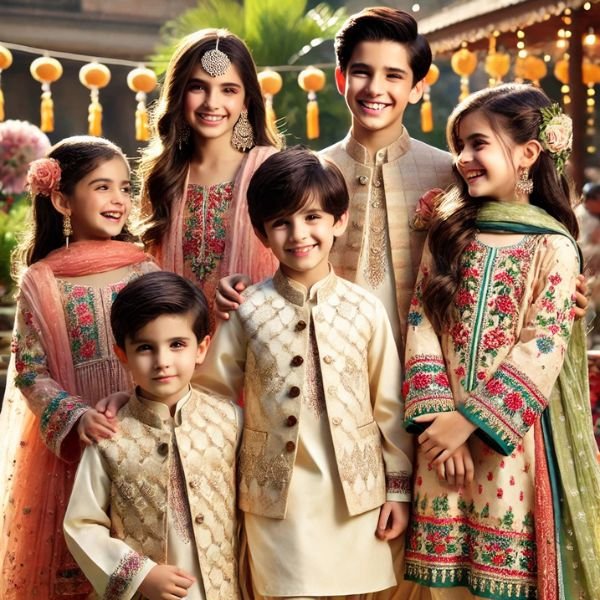
Traditional Dress of Pakistan – A Timeless Reflection of Culture and Identity
The traditional dress of Pakistan is a vibrant representation of the country’s deep-rooted heritage and regional diversity. Whether it is the everyday comfort of a shalwar kameez or the grandeur of a sherwani or lehenga choli, Pakistani attire seamlessly blends modesty with elegance. These garments are an important symbol of cultural identity, evolving over time while staying true to their historical significance. From the elaborate garments of brides and grooms to the elegant traditional attire of children, Pakistani fashion continues to celebrate its rich legacy with grace and pride.
